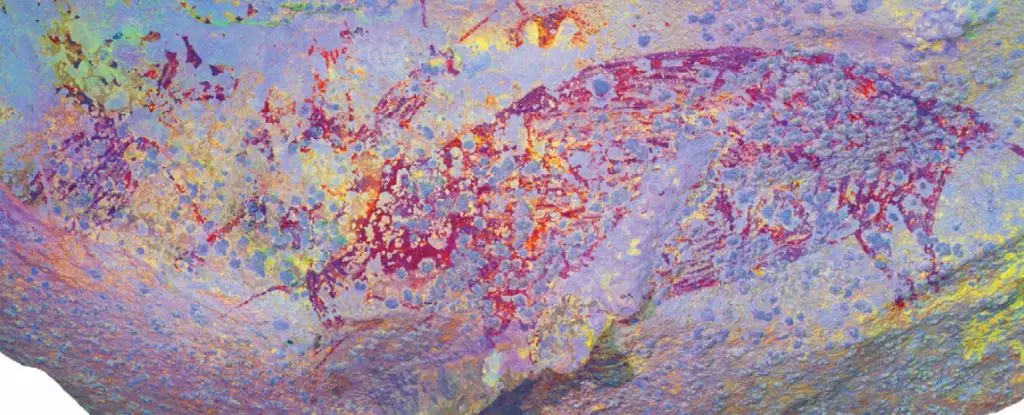The recent discovery in the island of Sulawesi, Indonesia has brought to light the oldest known figurative, and narrative, examples of art in the world. This groundbreaking find dates back to at least 51,200 years ago, surpassing previous record-holders by thousands of years. Through innovative techniques and meticulous research, archaeologists have uncovered a fascinating narrative composition that depicts human-like figures interacting with a pig, shedding new light on the origins of representational art.
The team of researchers, led by Adhi Agus Oktaviana and Maxime Aubert of Griffith University in Australia, utilized a novel dating method known as laser-ablation uranium-series imaging to determine the age of the ancient cave art. By analyzing the accumulation of uranium and thorium in calcite coatings on the paintings, they were able to accurately calculate the passage of time since the limestone deposition, providing a more precise timeline for these artistic creations. This technique revealed that the Leang Bulu’ Sipong 4 art is even older than initially believed, dating closer to around 48,000 years old. Additionally, previously undated art in a nearby cave called Leang Karampuang was found to be even older, further expanding our understanding of early human artistic expression.
The abundance of ancient cave art in Sulawesi and the neighboring island of Borneo suggests that this region played a vital role in the cultural history of Homo sapiens. The intricate depictions of anthropomorphic figures and animals in composed scenes indicate a rich culture of storytelling that existed during the Late Pleistocene period. The researchers note that the use of scenic representation to convey visual stories about human-animal relationships was a prevalent practice in this region, long before similar trends emerged in other parts of the world. This discovery signifies the development of a sophisticated artistic tradition among early humans, showcasing their creativity and imagination.
The unveiling of the world’s oldest representation of figures in cave art not only challenges previous assumptions about the timeline of artistic development but also underscores the importance of narrative storytelling in human culture. The intricate details and faint traces of the ancient paintings provide a glimpse into the lives and beliefs of our ancestors, offering a unique perspective on the evolution of art as a form of communication and expression. Each brush stroke and pigment application tells a story that transcends time, connecting us to the past in a profound and meaningful way.
The discovery of the oldest known figurative art in Indonesia marks a significant milestone in our understanding of human creativity and cultural evolution. Through advanced dating techniques and meticulous research, archaeologists have unearthed a treasure trove of ancient cave paintings that depict a rich tapestry of human-animal interactions and narrative storytelling. This groundbreaking find not only sheds new light on the origins of representational art but also highlights the ingenuity and artistic prowess of our early ancestors. As we continue to unravel the mysteries of our past, these ancient artworks serve as a testament to the enduring power of art to transcend time and connect us to our shared human heritage.


Leave a Reply